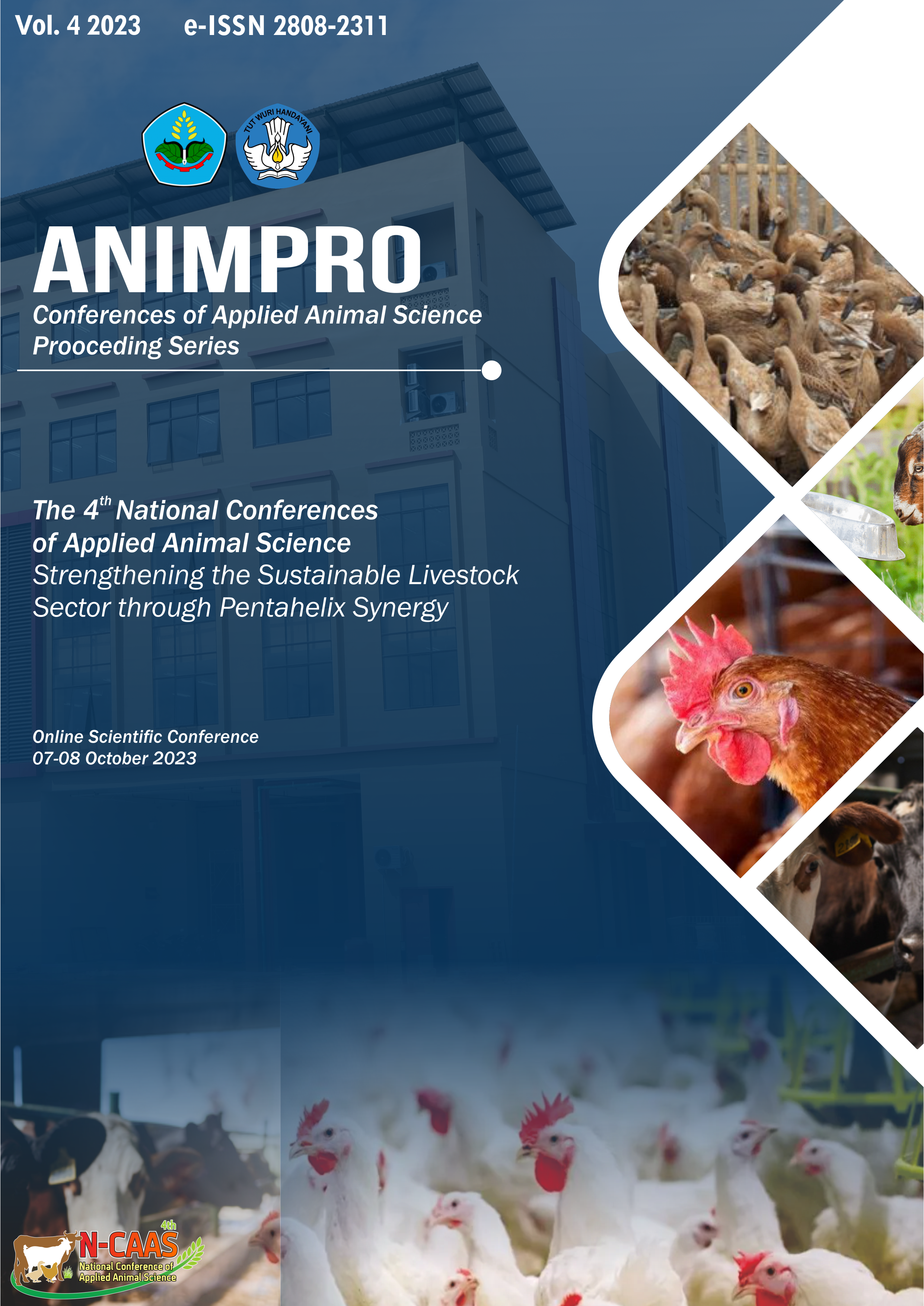Uji organoleptik yoghurt susu sapi dengan penambahan kedelai edamame (Glycine max (L) Merril)
DOI:
https://doi.org/10.25047/animpro.2023.560Keywords:
edamame, susu, uji organoleptic, yoghurtAbstract
This study aims to determine the organoleptic test results of yogurt with the addition of edamame soybeans. The research was conducted in Wuluhan District and the area around Jember State Polytechnic. In making this yogurt, 200 ml of fresh cow's milk was used for each treatment. The experimental design used a completely randomized design (CRD) with 5 treatments and 3 repetitions. The percentage of edamame addition was 0%, 5%, 10%, 15% and 20%. The organoleptic test included color, aroma, taste, texture, and level of preference which was tested by 25 panelists. The panelists gave an assessment according to the Likert scale 1-5 that the researcher provided. The data obtained will be analyzed by the Kruskal Wallis statistical test, if the treatment gives a significant difference, then the Mann-Whitney further test is carried out. The results showed that the organoleptic test of color, aroma and taste did not have a significant effect (P>0.05), while texture and level of preference had a significant effect (P<0.05). The P4 treatment with the addition of 20% edamame was most preferred by the panelists because it had a less acidic and thick texture.
Downloads
References
BSN. (2011). SNI 3141-1:2011. Susu Segar. Bagian 1: Sapi. Badan Standarisasi Nasional. Jakarta.
Effendi, M. H. 2001. Perbandingan kualitas yoghurt dari susu kambing dengan suhu pemeraman yang berbeda. Media Kedokteran Hewan, 17, 144-147.
Harjiyanti, M. D., Pramono, Y. B., & Mulyani., S. (2012). Total asam, viskositas, dan kesukaan pada yogurt drink dengan sari buah mangga (Mangifera indica) sebagai perisa alami. Jurnal Aplikasi Teknologi Pangan, 2(2), 104–107.
Hasruddin dan Pratiwi N. 2015. Mikrobiologi Industri. Alfabeta. Bandung: pp. 73-82.
Hidayat, I. R., Kusrahayu, & Mulyani, S. (2013). Total bakteri asam laktat, nilai pH dan sifat organoleptik drink yoghurt dari susu sapi yang diperkaya dengan ekstrak buah mangga. Animal Agriculture Journal, 2(1), 160–167.
Irkin, R., and Eren, U. V. 2008. A research about viable Lactobacillus bulgaricus and Streptococcus thermophylus number and food science in the market yoghurt. World Journal of Dairy & Food Science, 3(1), 25-28.
Lawless, H. and Heymann, H. 2010. Sensory Evaluation Of Food Principles and Practices Second Edition. Springer, New York.
Manab, A. 2008. Kajian Sifat fisik yoghurt selama penyimpanan pada suhu 4˚C. Jurnal Ilmu dan Teknologi Hasil Ternak. 3 (1) : 52-58.
Obouayeba, A.P, Moussa, D., Eric, F.S., and Hilaire, K.. 2015. Phytochemical analysis, purification and identification of Hibiscus anthocyanins. Journal of Pharmaceutical, Chemical and Biological, 3(2), 156-168.
Oka, B., Wijaya, M., & Kadirman. (2017). Karakteristik kimia susu sapi perah di Kabupaten Sinjai. Jurnal Pendidikan Teknologi Pertanian, 3, 195–202.
Samruan, W., R. O., & Oonsivilai., A. (2012). Soybean and Fermented Soybean Extract Antioxidant Activity. University of Technology.
Samsu, & H, S. (2003). Membangun Argoindustri Bernuansa Ekspor: Edamame (Vegetable Soybean). Graha Ilmu.
Sciarappa, W.J. 2004. Edamame: The Vegetable Soybean. New Jersey: Rutgers Cooperative Research & Extension.
Widodo. (2002). Bioteknologi Fementasi Susu. Pusat Pengembangan Bioteknologi Universitas Muhammadiyah Malang. Malang.
Wulandari, S., Hasanah, N., & Rukmi, D. L. (2021). Pengolahan daging ayam menjadi produk “SAH” (sehat, aman, dan halal). In Prosiding Seminar Nasional Terapan Riset Inovatif (SENTRINOV), 7(3), 534-540.
Downloads
Published
How to Cite
Issue
Section
License
Copyright (c) 2023 Niswatin Hasanah, Novi Dia Anggraeni

This work is licensed under a Creative Commons Attribution 4.0 International License.









